Workplace Bullying
Last Updated on July 31, 2025 / Communications, Employee Relations, HR Compliance
HR Question:
How do you address bullying behavior in the workplace?
HR Answer:
Bullying is one of the most common types of workplace misbehavior. In 2022, the Harvard Business Review reported that an estimated 48.6 million Americans, or about 30% of the workforce, are bullied at work, and that number continues to grow. Employees are encouraged to address inappropriate or uncomfortable feelings created by the behavior of the individual doing the bullying, while maintaining their own level of professionalism.
What steps should you take to prevent bullying in the workplace?
Identify the Behaviors
Bullying comes in many different forms – yelling, screaming, or using profanity, to more subtle manipulation, microaggressions or sabotaging of someone’s work. Be sure the behaviors are bullying in nature and not just a personality conflict or performance issue. Document what has been occurring.
Review the Employee Handbook
Many organizations have an anti-harassment and bullying policy in place to address issues between employees as well as employees and managers. These policies typically have a zero-tolerance stance on bullying or harassment in the workplace, and when a formal complaint is submitted, an investigation could occur.
Reach out to Leadership
The most common recommendation is to reach out to Human Resources or another trusted manager in the organization to help you navigate and address this issue. Help them understand how you are feeling and the behaviors you are witnessing. Be factual in your documentation of events that have occurred. Some organizations may inquire about your willingness to address the situation directly with the individual through informal means. In many cases, a respectful and candid conversation regarding the impact of the individual’s actions can effectively resolve the issue.
Determine the Approach
If escalation is necessary, you must determine how to handle it. HR will most likely determine whether to address the issue directly with the manager or involve the manager’s supervisor. Some experts recommend a formal investigation of bullying complaints to reinforce a position of zero tolerance and promoting a positive work environment. Your organizational culture will most likely dictate the next steps.
The Impact of Workplace Bullying
Unfortunately, there is no law protecting an employee against bullying, UNLESS it turns into a hostile work environment protected by Title VII of the Civil Rights Act and various other pieces of legislation. This would be the case, for example, if a senior manager is ONLY bullying female employees. Hostile work environments are serious situations that need to be handled swiftly and professionally within the organization and are technically (and legally) different from bullying.
Regardless of legalities, bullying, even verbal yelling and/or abuse, can have a serious impact in the workplace if it is not handled properly. Some impacts include:
- Decreased team morale. Low morale for the employee and everyone else exposed to bullying, which ultimately impacts productivity.
- Increased turnover. It can cause stellar employees to leave for a better work environment. These situations also have the potential to lead to a lawsuit for hostile work environment.
- Reputational damage. Organizations that do not handle toxic workplace issues can quickly damage the employer’s brand. This will impact not only retention but also on your ability to recruit staff.
As an employee involved in this situation, you have steps to take to have a conversation about the situation and actions to take to protect yourself. Reach out to leadership or HR regarding your concerns and listen openly during the discussion. Is it bullying? If so, how is the organization going to help? There may be steps you, as well as the company, can take to improve the situation. If it is not addressed, additional cultural issues will likely occur. A loss of respect for organizational leaders and HR can ultimately cause work cultures to devolve into toxic work patterns, resulting in long-lasting impacts.
A very special thank you to Mary Mitchell, Sr. HR Business Advisor, for her contribution to this article.
Did you know that most employees leave their jobs because of their managers, not their employers? Are you having difficulties in your company that stem from employee-manager related issues? Clark Schaefer Strategic HR has years of experience in managing employment relations and coaching employees and managers on how to resolve conflicts. Visit our Employee Relations page to learn how we can help you resolve some of your toughest ER problems.





